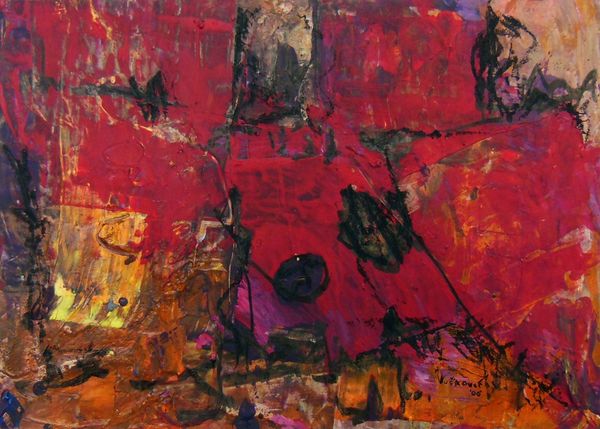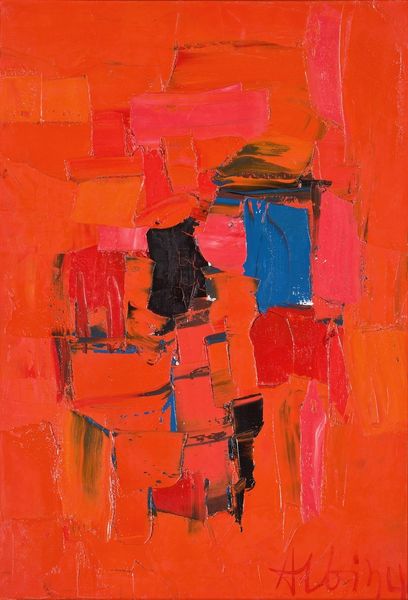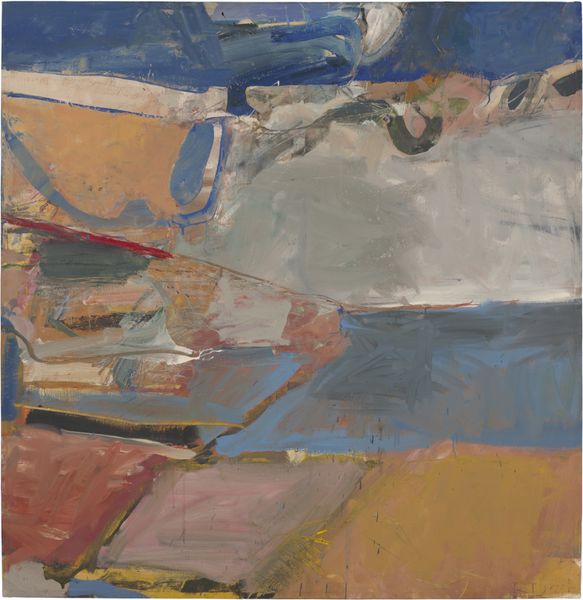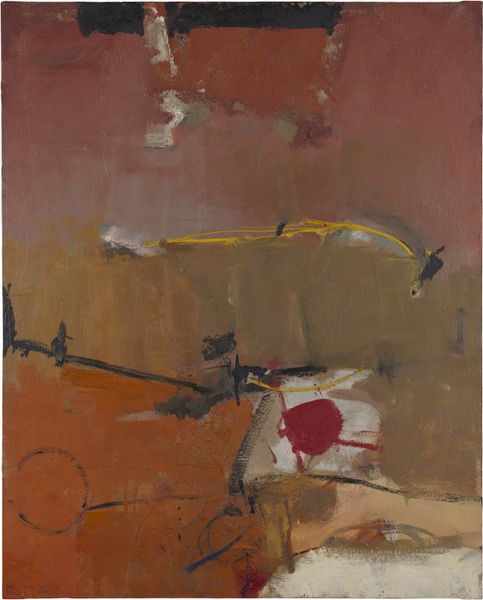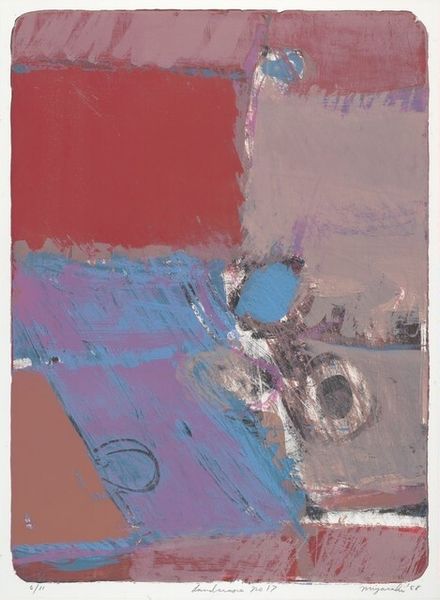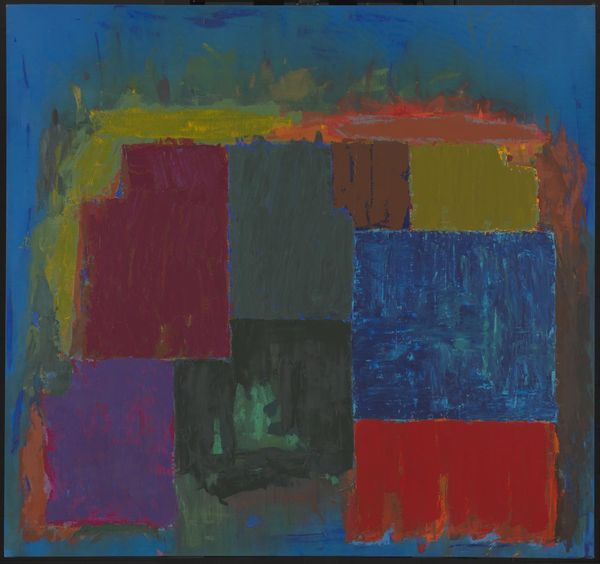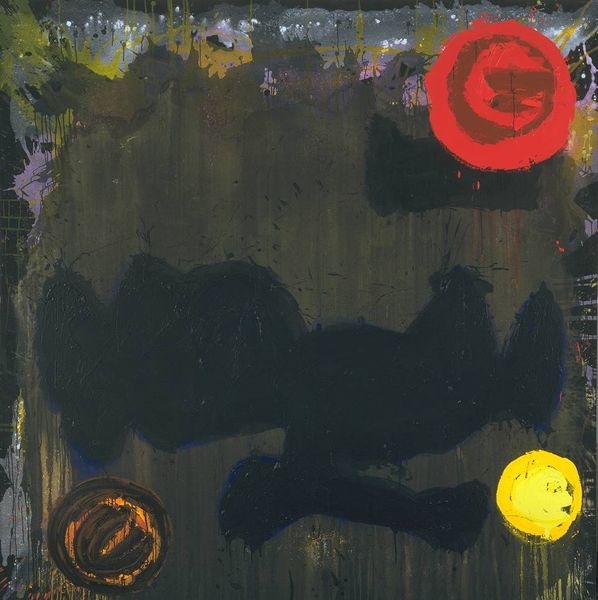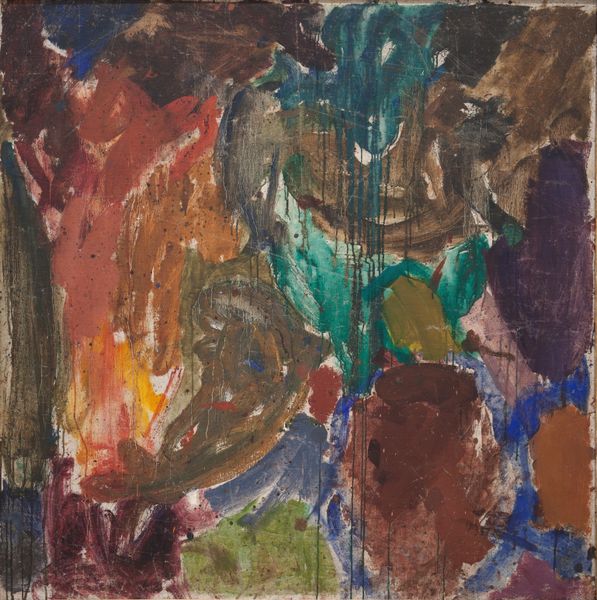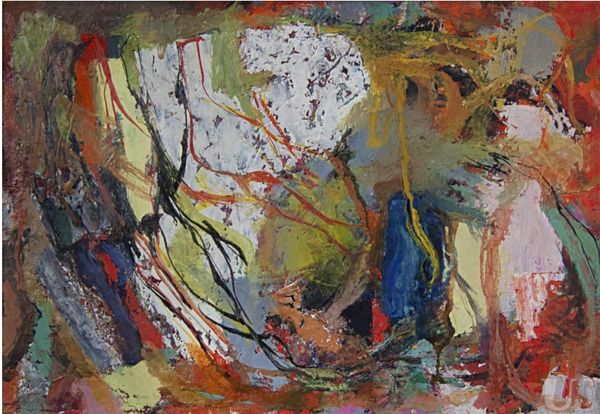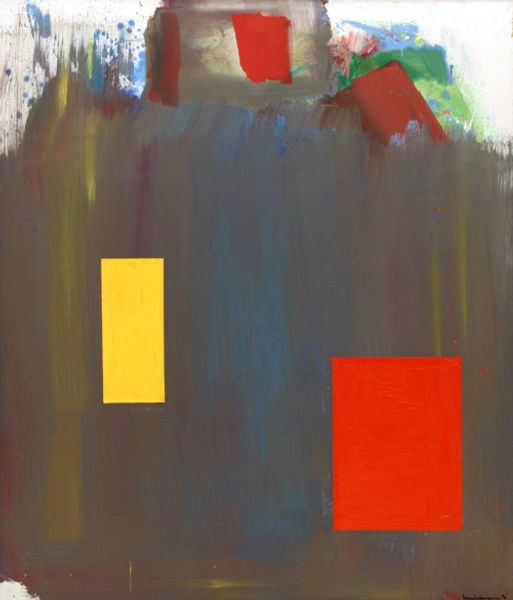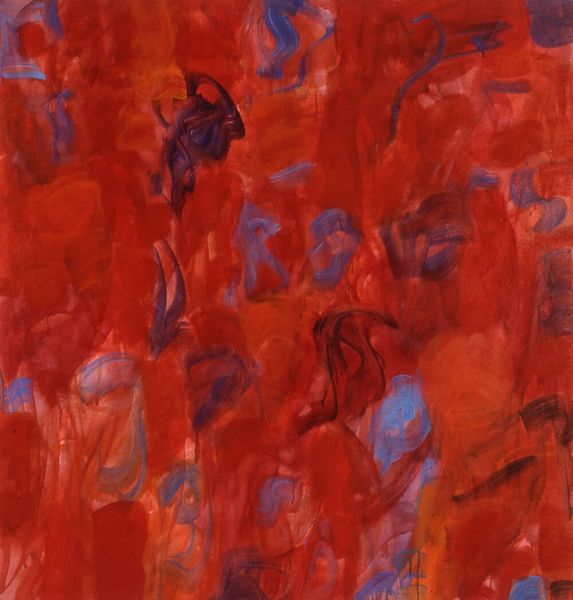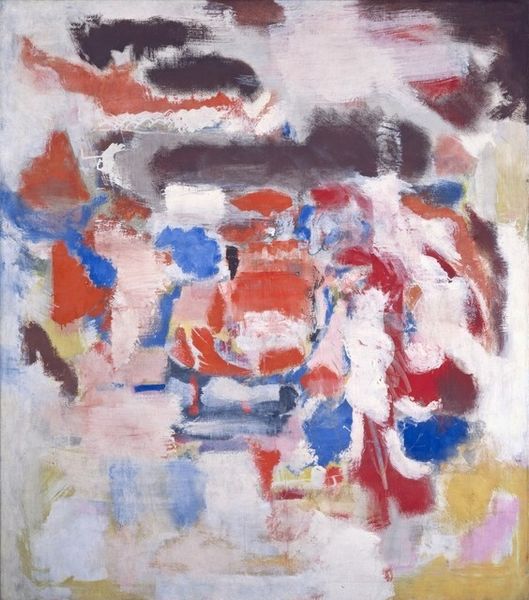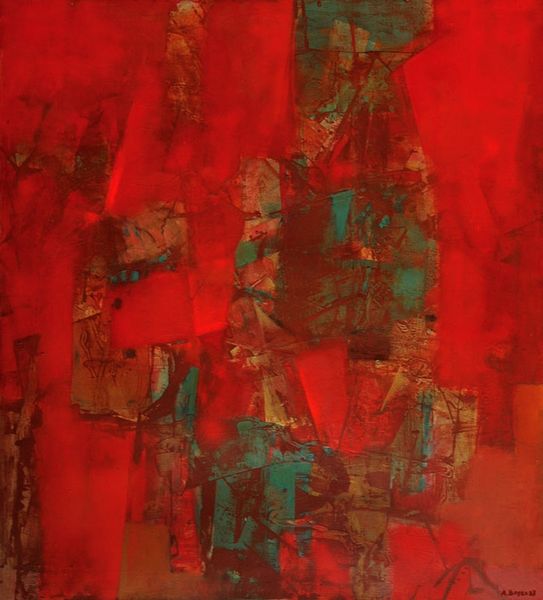
Dimensions: support: 4016 x 3613 mm
Copyright: © Per Kirkeby | CC-BY-NC-ND 4.0 DEED, Photo: Tate
Editor: This immense painting, "The Siege of Constantinople" by Per Kirkeby, overwhelms with its raw energy. The reds feel violent, but there's also a strange beauty in the chaos. What do you see in this piece? Curator: I see a confrontation. Kirkeby, a geologist turned artist, often explored the tensions between natural forces and human construction. The siege itself, a historical clash of civilizations, becomes a metaphor for internal conflict. Do you see the layering of colors and lines as a kind of struggle? Editor: Yes, definitely. The reds seem to be pushing against the grays and blues, like opposing forces. So, you're suggesting the painting is not just about a historical event, but about broader themes of power and conflict? Curator: Precisely. It's about how history and identity are constantly being negotiated, how power shapes our understanding of the world. And how those conflicts manifest both externally and within ourselves. Editor: That gives me a lot to consider, thank you! Curator: My pleasure; it makes me consider my own position, too.
Comments
tate 6 months ago
⋮
http://www.tate.org.uk/art/artworks/kirkeby-the-siege-of-constantinople-t07460
Join the conversation
Join millions of artists and users on Artera today and experience the ultimate creative platform.
tate 6 months ago
⋮
Over four metres high and more than three and a half metres wide, The Siege of Constantinople 1995 is a portrait-orientated abstract painting by the Danish artist Per Kirkeby. The work consists of an assemblage of colours rendered in thin layers of oil paint, some of which are semi-translucent to allow lower layers to show through. Particularly prominent within the roughly edged blocks of colour are large areas in various shades of red and orange, a range of muted greys, greens and browns on the right-hand side of the composition and a small bright section of deep blue paint situated just above and to the right of the centre of the canvas. Appearing throughout the work and especially prominent in its top half are a series of thin intersecting lines, mostly in yellow or dark orange, that are reminiscent of cartography. Also visible on the far right edge of the painting is a form sketched in black that is suggestive of a building, possibly a church. The paint is generally applied in an even thickness across the composition with some sharp ridges of impasto, and drip marks are evident along its bottom edge. The work is unvarnished.
